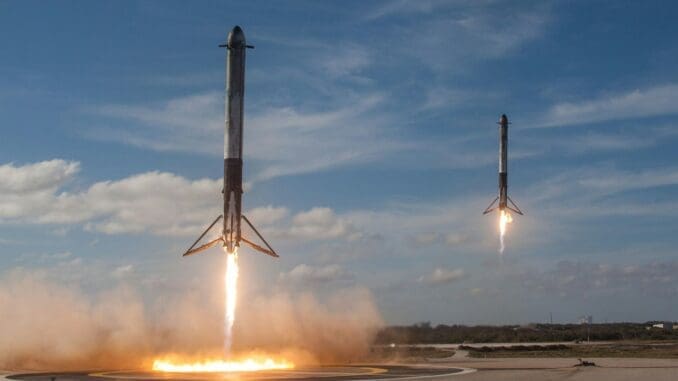
The final frontier is evolving faster than ever. As we head into 2025, space technology is no longer just about rockets and satellites—it’s about redefining how we explore, communicate, and even live beyond Earth. With private companies, government agencies, and international collaborations pushing the boundaries, this year promises major breakthroughs that could reshape our future in orbit and beyond. Here are 10 space tech trends you’ll want to keep an eye on as the cosmos becomes more connected, commercialized, and creatively explored.
The space technology industry is experiencing unprecedented growth, both in India and globally. With increasing investments from private players and national space agencies, innovations in satellite technology, launch systems, space exploration, and data analytics are accelerating rapidly. In India, organizations like ISRO and emerging space startups are playing a pivotal role in advancing space capabilities and contributing to global missions. Internationally, collaborations, reusable rockets, and AI-powered satellite systems are transforming how we understand and utilize space.
To stay ahead in this dynamic field, developing specialized skills is essential. IISc’s Space Technology course offers an advanced curriculum designed by top researchers and experts. It covers cutting-edge topics such as satellite systems, propulsion, space mission design, and AI in space applications. With hands-on learning, industry exposure, and academic excellence, this program equips learners with the technical knowledge and future-ready skills needed to thrive in the rapidly evolving space technology landscape.
Space Technology Trends
1. Artificial Intelligence/Machine Learning (AI/ML)
AI/ML is revolutionizing space missions by enabling autonomous navigation, data analysis, and anomaly detection. These technologies help spacecraft make decisions in real-time, reducing reliance on Earth-based control. AI also enhances satellite imaging, planetary exploration, and predictive maintenance. As space missions become more complex, AI/ML is key to managing large datasets, improving efficiency, and unlocking deeper insights from space-based observations.
2. Advanced Communications
Next-generation communication systems like laser-based links and 5G satellite integration are transforming data transmission in space. These technologies offer faster speeds, reduced latency, and greater bandwidth, enabling real-time communication between spacecraft, Earth stations, and even remote regions on Earth. Advanced communications are critical for deep space missions, lunar exploration, and global internet access, ensuring robust and uninterrupted connections across vast distances.
3. Proliferated Satellite Constellations
Proliferated satellite constellations involve deploying thousands of small satellites in low Earth orbit. They enhance global connectivity, support high-speed internet, and improve Earth observation capabilities. Companies like SpaceX and OneWeb are leading this effort. These constellations provide redundancy, reduce latency, and expand coverage, but also pose challenges like space debris and spectrum management, necessitating careful coordination and regulatory oversight.
4. Interoperability and Connectivity
Interoperability ensures different space systems and satellites can communicate and operate together efficiently. It supports mission collaboration, data sharing, and system integration across agencies and private entities. As global participation in space grows, standardized protocols and connectivity are essential for seamless operations. This trend also supports the development of a space internet, connecting Earth-based and orbital systems into a unified digital ecosystem.
5. Nuclear Space Propulsion and Power
Nuclear propulsion offers faster, more efficient travel for deep space missions compared to chemical rockets. Technologies like nuclear thermal and nuclear electric propulsion reduce travel time and improve payload capacity. Nuclear power systems also provide reliable energy for spacecraft and habitats, especially in environments where solar power is limited. These innovations are crucial for sustained lunar and Mars exploration.
6. Connecting Domains through Space Data
Space-based data supports multiple sectors, including agriculture, defense, finance, and urban planning. High-resolution imagery and remote sensing enable informed decision-making on Earth. When combined with AI and big data analytics, space data provides powerful insights across industries. Increased accessibility through open platforms and commercial services fosters cross-domain innovation, making space a vital enabler of digital transformation and sustainable development.
7. Human Lunar Exploration
Lunar exploration is gaining momentum with missions aiming to establish a permanent human presence on the Moon. Programs like NASA’s Artemis are developing infrastructure for lunar bases, resource extraction, and scientific research. These efforts will serve as a stepping stone for Mars missions and enable technological breakthroughs in habitat construction, life support, and energy systems—laying the foundation for long-term space habitation.
8. Climate and Weather-Monitoring Technology
Satellites are essential tools for monitoring Earth’s climate and weather. They track atmospheric changes, natural disasters, and greenhouse gas emissions with high accuracy. This data helps scientists model climate patterns, issue early warnings, and inform global policy. Innovations like hyperspectral sensors and AI-enhanced analytics make environmental monitoring more precise, helping humanity respond effectively to climate challenges and build resilience.
9. Space-Based Quantum Communication
Quantum communication in space offers ultra-secure data transmission using quantum mechanics. Satellites can distribute quantum keys that are nearly impossible to intercept or hack. This technology is ideal for protecting sensitive information in finance, defense, and governance. Countries like China are pioneering quantum satellite experiments, aiming to build a global quantum internet and redefine the future of cybersecurity and secure global communication.
10. Advanced Manufacturing
Advanced manufacturing enables building tools, components, and structures directly in space using technologies like 3D printing and robotics. This reduces launch costs and enables quick repairs and prototyping. On-orbit manufacturing supports sustainable missions, especially for long-term lunar or Mars operations. It also opens possibilities for building habitats and infrastructure using local materials, supporting human presence and commercial activity beyond Earth.
Conclusion
As space technology continues to advance rapidly, 2025 promises to be a pivotal year marked by innovation, collaboration, and exploration. From AI-powered systems to quantum communication and lunar missions, these trends are shaping the future of the space industry. For aspiring professionals, staying ahead means building the right expertise. Pursuing a specialized space technology course equips learners with in-demand knowledge, practical skills, and industry exposure—preparing them to contribute meaningfully to cutting-edge projects and take on exciting roles in this dynamic and fast-growing global sector.

Be the first to comment